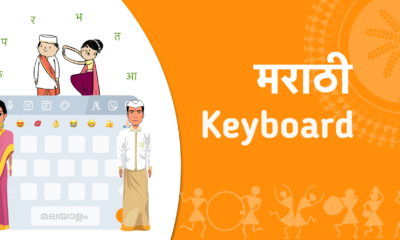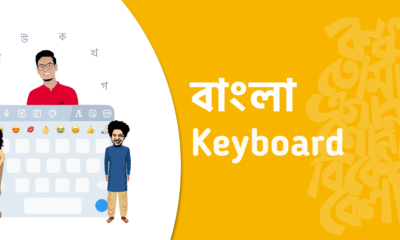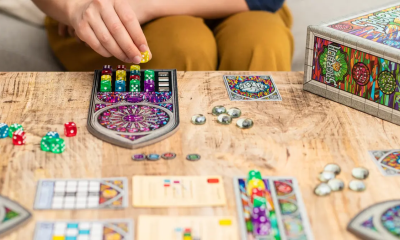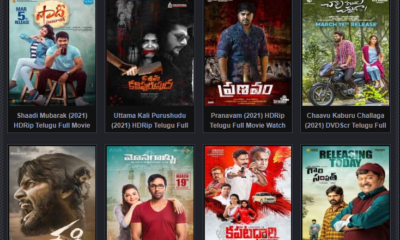News
Unlocking the secrets of the ancient coastal Maya

ATLANTA—Georgia State University anthropologist Dr. Jeffrey Glover grew up in metro Atlanta, but speaking to him, it sounds like his heart is in Quintana Roo. This part of Mexico’s Yucatán Peninsula has been the home base for an expansive research project spanning more than 10 years. His research there with Dr. Dominique Rissolo, a maritime archaeologist at
UC San Diego’s Qualcomm Institute, has uncovered thousands of artifacts that help them shed new light on the ancient Maya people who lived along this stretch of coast.
Glover and Rissolo are working with an interdisciplinary and international team of researchers to uncover new insights about the dynamic interplay between social and natural processes that shaped life for these ancient, Maya people over the last 3,000 years. The team has just released a new article in the Journal of Island and Coastal Archaeology summarizing their findings to date.
“The Proyecto Costa Escondida,” which translates into English as the ‘hidden coast’ project, has focused on the ancient Maya port sites of Vista Alegre and Conil.
“We chose the project name because, the coast is literally hidden behind mangroves. We’ve canoed the coastline and you’ve really got to snake back to get to the site,” Glover said. “But at the same time, and more importantly, this region has been hidden from scholarship—there just hadn’t been a lot of work done there until we arrived.”
To date, the work has produced a wealth of knowledge about maritime Maya civilization since 800 BCE (Before Common Era). Glover, an associate professor of Anthropology, is using an historical ecology framework to better understand the dynamic relationship between humans and the environment at the ancient Maya port sites of Vista Alegre and Conil.
“This is about how people respond to change,” said Dr. John Yellen, program director for archeology at the U.S. National Science Foundation, which helped fund the research. “Through the lens of historical ecology, this broad team of researchers has shown how Maya adapted over centuries to a wide range of environmental changes. This insight into one society’s long-term adaptation to coastal environments provides a fruitful model for studying such interactions across many cultures.”
This region lies along Yucatan’s north coast, some hours from popular tourist attractions like Cancun and well-known archaeological sites like Chichen Itza and Tulum.
“What’s remarkable about our study area is that it represents one of the least developed coastlines on the northern Yucatan Peninsula,” said Rissolo, who was recently featured in a video series about the Maritime Maya. “When trying to understand the ancient maritime cultural landscape of the so-called ‘Riviera Maya,’ for example, your perspective is obscured by all-inclusive resorts, golf courses and theme parks. The shores of the Laguna Holbox, on the other hand, are still largely wild and offer a more unobstructed view into the region’s past.”
The site of Vista Alegre is a small island surrounded by mangroves that lies along the southern shore of the Holbox Lagoon (also called Conil or Yalahau Lagoon). Glover describes Vista Alegre as what was probably once a small, bustling port. Here, they’ve discovered and recorded as many as 40 rock-filled platforms that served as the foundation for perishable pole and thatch buildings. The largest is a pyramidal structure that stands about 13 meters—or nearly 43 feet—tall. Glover believes this probably served as a temple and a lookout where the site’s inhabitants could see if anyone was approaching by sea. Conil, on the other hand, is a much more expansive site located beneath the modern town of Chiquila and was encountered by early Spanish conquistadors who described it as a town of 5,000 houses.
Researchers have identified tens of thousands of artifacts and ecofacts (animal and plant remains that speak to past diets), which have helped improve our understanding of how the landscape has changed over time, how the people lived, and how they dealt with challenges not unlike those faced by people today, such as: rising sea levels and changing political and economic systems. “We are coordinating and synthesizing all the different datasets that we have, which gives us a wider-angle picture,” Glover said.
The project, which has been funded by the National Science Foundation (NSF) and the National Oceanic and Atmospheric Administration (NOAA), combines traditional archaeological techniques (think digging with a small hand trowel or shovel) with new, high-tech practices for land and sea. Glover says it is a matter of making the most out of the materials at hand.
“Archaeology requires a broad knowledge of the latest scientific techniques mixed with a strong reliance on ‘MacGyvering,’ Glover said. “We often utilize rustic equipment combined with high-tech tools. On any given day, we might find ourselves in a small dinghy borrowed from the local community out of which we are running marine geophysical survey equipment or pounding PVC tubes into the sediments with a homemade fencepost driver.”
The complex work of marine geoarchaeology was spearheaded by Dr. Beverly Goodman-Tchernov and Dr. Roy Jaijel of the University of Haifa in Israel. The core samples include sediment from the coastline and give researchers a better idea of how the coastline has changed over time by looking at a host of different datasets. In particular, the remains of tiny creatures (foraminifera) are preserved in the cores. These creatures lived in very specific environments, so by finding certain species of foraminifera, the team can reconstruct what the coastal environment was like. Instead of being hidden as it is today, Vista Alegre was most likely once more open and purposely built on a peninsula that jutted into the lagoon making it a more obvious destination for ancient canoe-based traders.
Along with paleo-coastline reconstruction, Dr. Patricia Beddows of Northwestern University has been combing research on the modern hydrological system with oxygen isotope values from the core sediments to study how access to freshwater changed over time as a result of rising sea-levels. The team has to bring all of their drinking water with them to the site, so they are keenly aware what a limiting factor freshwater access could have been for past peoples. One idea is that there were springs near the site in the past that have been effectively drowned by rising sea level. To try to identify freshwater seeps (that are about two degrees Celsius cooler than the ocean water) the team is using a drone equipped with a thermal camera to identify areas that might represent past sources of freshwater.
The team also uncovered tens of thousands of pieces of pottery and hundreds of pieces of obsidian (volcanic glass used to make tools that can be traced to its original geologic location), which reveal these coastal peoples were involved in extensive trade. Glover says the diversity of these artifacts stands out when compared to that of nearby, inland sites. The research team believes the archaeological data reinforce the idea that these coastal peoples had much broader and more cosmopolitan connections because they were part of long-distance, canoe-based trade networks.
These trade connections are most evident about 1,000 years ago when researchers see a major realignment and expansion in international trade associated with the emergence of Chichen Itza as a powerful religious, political, and economic city.
“Strong evidence of this realignment comes from the obsidian data which reveals greater connections to parts of central Mexico, near modern day Mexico City” Glover said.
Many of these artifacts come from poring over the detritus—or garbage—left behind by this past civilization, Glover says this is often an archeologist’s goldmine. Mixed with the pottery and obsidian, the research team found items like spindle whorls, that would have been used to make cotton thread which could have been traded as bolts of cloth or used for fishing lines or nets.
When asked what is missing, Rissolo said “We would love to find an intact ancient Maya trading canoe! It’s possible that such a vessel may be preserved beneath the muddy bottom of the bays surrounding Vista Alegre. We would learn so much about these legendary watercraft.”
The team also discovered an array of natural materials, including more than 20,000 animal bones, from sharks, rays, turtles and marine gastropods (gastropods include animals like conchs and whelks which have been studied by another project leader, Dr. Derek Smith). The team is working closely with Mexican archeologists at the Autonomous University of Yucatan in Merida, Mexico to analyze the animal remains and burial sites that have been discovered.
Research came to a halt during much of the pandemic, but after months of excavations and discovery of so many artifacts, the team is still working to analyze their findings. Glover said they are also in discussions with local leaders in Mexico to create a community museum to highlight the region’s rich cultural and natural history.
Often, when people think about the ancient Maya, they may picture some sudden, cataclysmic event that upended daily life and led to end of this past, advanced civilization. Glover notes that this could not be further from the truth. Maya peoples are alive and well today in the Yucatan, Belize, and Guatemala. While the ‘collapse’ of Maya kingdoms between 800 and 900 CE often gets blown out of proportion in popular media, that does not mean that were not changes in settlements over time.
“I think it’s a story, not of a sudden or mass exodus, but a shift over time,” Glover explained, “and to understand these shifts we must understand the complex interplay of environmental and cultural factors, which is what our research is revealing.”
The research also highlights the specific lifestyles and adaptive strategies needed to live in a dynamic coastal environment and how this fostered a shared identity amongst coastal Maya communities.
“Our research gives us some idea of the shared challenges that coastal peoples faced – rising sea-levels, diminished freshwater, changing economic and political systems – and they probably leaned on one another, Glover said. “In some ways, I think it might have been easier to hop in your canoe and paddle down the coast to seek help than it was to walk over land.”
“The past, just like the present is not static, and these people were constantly having to make decisions. Sometimes those decisions meant sticking it out, and sometimes they meant re-establishing their lives right down the coast. This new article is a great summation of what we have learned to date. But, you know, there’s always more to be done, and we certainly have plans to continue.” Glover said.
Later this year, the team will start a new project with Dr. Tim Murtha, a colleague at University of Florida, to conduct a light detection and ranging (LIDAR) survey. They will collect detailed elevation data that can reveal the distribution of ancient Maya settlements like house mounds or pyramids. While not focused on the coast, the project will help the team better understand the relationship between inland and coastal communities.
Please visit http://costaescondida.org for more information on the project.
On this project, Glover and Rissolo teamed with Dr. Patricia Beddows (Northwestern University), Dr. Beverly Goodman (University of Haifa), Dr. Derek Smith (University of Washington), and others under the auspices of Mexico’s National Institute of Anthropology and History (INAH).
JOURNAL
The Journal of Island and Coastal Archaeology
METHOD OF RESEARCH
Observational study
SUBJECT OF RESEARCH
Not applicable
ARTICLE TITLE
The Proyecto Costa Escondida: Historical ecology and the study of past coastal landscapes in the Maya area
ARTICLE PUBLICATION DATE
9-Jun-2022
News
Exploring Independent Middle East News from Daizy Gedeon

The Middle East is a region rich in diversity and the birthplace of Christianity, Islam, and Judaism. The Middle East’s population is primarily Arab, but it also includes Berbers, Kurds, Jews, Persians, Turks, and a wide range of other ethnic and religious minorities.
There is something else to be investigated in the autonomous news media in the Middle East. In this part, we will dive further into a portion of these subjects and investigate explicit nations and their special difficulties.
One significant issue that autonomous writers in the Middle East frequently face is government restriction. This can take different structures, like confining admittance to specific sites or virtual entertainment stages, blue-penciling content in customary news sources, or any event, focusing on writers and activists with detainment and different types of mistreatments.
Who is Daizy Gedeon?
Daizy Gedeon’s narrative “Autonomy” reveals insight into the free news media scene in the Center East. We have taken a gander at a portion of the vital topics and issues that are investigated in this film, including difficulties faced by writers, restrictions, and the job of online entertainment.
Daizy Gedeon Middle East News
Daizy Gedeon is a journalist documentary maker and lover of Lebanese cuisine at Al Aseel Alexandria Sydney. She works in the middle east news. Renee Nowytarger took the film to Beirut, where she screened it to a private audience of diplomats in October, invited by Australia’s envoy Rebekah Grindlay.
Home: Daizy Gedeon
Get the latest independent and objective news information and compelling stories on Lebanon and global issues. Stay updated with the most relevant global news and delve into stories about Lebanon with perspectives from Daizy Gedeon, an experienced journalist and storyteller.
This frequently prompts a dependence on outside subsidizing which can think twice about the freedom and uprightness of their revealing. Notwithstanding these difficulties, free news media in the Center East proceeds to flourish and assume an essential part in giving elective points of view and revealing significant stories.
Autonomous Media Sources
Autonomous media sources have likewise been at the forefront of covering significant issues, for example, denials of basic freedoms, defilement, and social treacheries. Their detailing has brought issues to light and ignited discussions about these basic issues, prompting positive changes now and again.
Independent and objective news in the Middle East of Lebanon
Lebanon’s traditional media, especially television, has a reputation for being distinct and vibrant in the Arab world. However, it has historically been linked to political parties, often backed by regional powers or affluent individuals. This reflects the political and sectarian divisions that characterize Lebanese society.
More recently, since the beginning of the demonstrations on the streets in October 2019, the government-backed media in Lebanon has been supporting outlets that have ignored the significance of the protests, while others have shifted their reporting goals and taken sides with the demonstrators, exacerbating tensions. Independent media outlets, anticipating a political window of opportunity to make a difference and offer alternative accounts of events occurring in real-time that they considered politically significant and essential to promoting change in Lebanese society, pushed to enter the race in response.
Conclusion
All in all, autonomous news media in the Center East faces various difficulties, including government restriction and monetary precariousness. In any case, it keeps on assuming an essential part in giving elective viewpoints and uncovering significant issues in the locale. Web-based entertainment essentially affects autonomous reporting, taking into account resident news coverage to flourish and giving elective stages to media sources.
News
Behind the Scenes: The Life and Partnerships of Beth Grosshans Husband

Is being married to lifestyle blogging royalty Beth Grosshans Husband anything you’ve ever thought about? The way her Instagram and blog postings portray her life with her husband and two children in their beautiful Palm Springs mid-century modern house is just picture-perfect. It’s like they’re living the #relationshipgoals dream. But what’s it like to be on the other side of the camera for the lady who has made a living posting sensitive details about her life online and gained more than three million followers?
Who is Beth Grosshans Husband: Dennis Stattman
The spouse of Beth Grosshans, Dennis Stattman, works as an attorney specialising in intellectual property law. Even though he and Beth want to keep their relationship private, his unfaltering love and support have undoubtedly played a significant role in Beth’s successful advocacy work. Although Mr. Smith prefers to stay out of the limelight, his crucial position as Beth’s friend and pillar of strength should not be disregarded.
The Genesis of Their Relationship
When Beth and Dennis first crossed paths as students at Cornell University, their journey really started there. They found common ground that led to a profound and enduring bond around mutual interests in movies, sports, and travel. Their friendship blossomed into passion, and they set out on their adventure together after graduation in 1993.
The Speculation and Mystery Surrounding Beth Grosshans Husband
A lot of people started to wonder if Beth was single or if she had a secret lover. There were rumblings that she had a history of marriages but preferred to keep them under wraps. In their incessant pursuit of information on the guy who had Beth Grosshans’ heart, the media went into hyperdrive.
Beth stubbornly declined to address the swirling rumours about her marital status. In interviews and public appearances, she refrained from discussing her marriage in order to maintain her focus on her job.
Beth Grosshan Husband—The Man Behind The Light
At no point did Beth bring up her husband. Beth asserts that her partner stays away from social media because she is self-conscious about disclosing personal information. Maintaining her privacy, she maintains tabs on Beth’s internet habits. Some viewers used deception to assess Beth Grosshan’s husband. Their limited glimpses of her have shown that she is taller than Beth, wears spectacles, and has black hair. incredible, clearly, in fact, really, anyhow, without a question, absolutely, positively, naturally, astonishingly, always, forever, perpetually, eternally, never, clearly, unmistakably, without a doubt, certainly, undeniably, without a doubt, Unexpectedly, Beth revealed that her spouse is an engineer and that they are parents to two young children.
Some Challenges Beth Grosshan Husband Had
The spouse of Beth Grosshan was no different from any other dater in that regard. Along the way, they all encountered limitations. Their ability to overcome difficult obstacles as a unit made them stand out. In the beginning, a long-distance marriage was more difficult. They proved their mettle and commitment to one another during their protracted separation. Rather of enhancing their bond, they used distance to fortify it.
Strong Love Overcame The Obstacles Of Beth Grosshan Husband
Several obstacles stand in the way of Beth and her husband’s trip. Their love was tested when life unexpectedly intervened. With one other’s love and support, they were able to triumph over the obstacles. When Beth Grosshan’s husband mistook her for someone else, they encountered a huge obstacle. A severe blow that has hit the economy hard and cast doubt on its future. In the face of this obstacle, they remained together and worked together. Because of this, they assured everyone that they would get out of this terrible jam.
Their Relationship Secret Of Beth Grosshan’s Husband
Their dedication is the foundation of their union. Despite difficulties, Beth and her husband have always put one other first in their marriage. Honesty, reliability, and gratitude are important to them. Cooperation and flexibility are likewise crucial. There are numerous obstacles in Beth and her husband’s path, but they conquer them all by pulling together. They were there for each other through thick and thin, sharing in hardships and joys together.
Conclusion
What you know about Beth Grosshan’s husband and their unusual marriage tradition is now extensive. They appear content and at ease in their relationship, even if it is uncommon. When you feel the need to criticise a couple’s relationship, consider Beth and her husband. Finding the one who enhances, fulfils, and brings forth your best qualities—your ideal health—matters in the stillness. Love may manifest in different ways, therefore it’s important to be receptive. Finding your soul partner is a complete mystery. That individual?
Frequently Asked Questions
Who Is Beth Grosshans?
American businesswoman Beth Grosshans has found great success. She started and runs the multimillion-dollar SheEO company. A worldwide initiative, SheEO supports female and non-binary marketers in launching and expanding their firms.
What Work Did The Grosshans Do?
Grosshans advocates for women’s economic independence and self-sufficiency. Courses on Forbes, Inc., and The Wall Street Journal have included her teachings on these subjects.
Who Married Beth Grosshans?
Beth Grosshan was wed to Dennis Stattman. Instagram is shaped by Beth Groshans, who writes a blog every day. She would prefer that her spouse remain unsung. Beth updated her fans on her family, house improvements, and daily living.
Why Did Beth Grosshans Seek To Hide Her Husband?
At no point did Beth bring up her husband. Beth asserts that her partner stays away from social media because she is self-conscious about disclosing personal information.
How Did You Meet Beth Grosshans’ Husband?
Find out how their first meeting was just a coincidence. A bowling alley was an unexpected location to meet her husband, Dennis.
News
Understanding Silver Price Trends in Melbourne: Factors, Trends, and Current Values

Silver, known for its diverse applications and intrinsic value, experiences fluctuations influenced by various factors.
Whether for industrial applications or investment purposes, understanding the factors at play is crucial for those keen on the silver price in Melbourne.
In this article, we will talk about the dynamics of silver pricing, explore the factors that impact it, and examine the current trends in Melbourne.
Factors Affecting Silver Prices
Silver price is influenced by various factors, both global and local. Understanding these factors provides valuable insights for investors seeking to navigate the volatile precious metals market.
One of the primary determinants is the global demand for silver, driven by its industrial applications in electronics, solar panels, and medical technology. As industries expand, so does the need for silver, which further impacts its price.
Moreover, the economic health of major nations, including Australia, plays a pivotal role. In times of economic uncertainty or major world crises, investors often turn to precious metals like silver as a safe-haven asset, causing an increase in demand and subsequently raising prices.
Opposite of that, periods of economic stability may witness a decrease in silver prices as investors diversify their investment portfolio.
Geopolitical factors also contribute to silver price fluctuations. Political tensions, trade disputes, and global events can create an atmosphere of uncertainty, prompting investors to turn to silver as a hedge against inflation and economic downturns.
Current Silver Price Trends in Melbourne
As of the latest market reports, the silver price in Melbourne is reflective of the global trends influencing precious metal values. The current silver price in Melbourne stands at AUD 36, demonstrating a rise of 2.22% in the past 6 months. This fluctuation aligns with the broader patterns observed in the international precious metals market.
As for the future value of silver, predictions are optimistic, with the silver price potentially rising to around AUD 53 in the first quarter of 2024, and moving to AUD 73 by 2025.
It’s important to note that silver prices are not solely dictated by global factors. Local market conditions, such as mining activity and silver demand within Australia, also contribute to the dynamics. Melbourne, as a key economic hub, often experiences unique market trends compared to other regions.
Impacts of Local Mining Activity
Australia, blessed with rich natural resources, is a significant player in the global silver market. The country’s mining activity, particularly in regions surrounding Melbourne, has a direct impact on local silver prices.
Changes in production levels, mining regulations, and exploration activities can influence the supply side, subsequently affecting prices in Melbourne.
Investor Sentiment and Silver Price Melbourne
Investor sentiment, shaped by both global and local factors, contributes significantly to silver price movements in Melbourne. The city’s vibrant financial scene, coupled with the increasing awareness of precious metals as an investment option, plays a role in shaping the demand for silver.
As investors in Melbourne closely monitor global economic indicators and geopolitical events, their reactions to these factors can create short-term fluctuations in the local silver market.
-

 Apps1 year ago
Apps1 year agoWhy is Everyone Talking About Hindi Keyboards?
-

 Social Media1 year ago
Social Media1 year agoWho is Rouba Saadeh?
-

 Apps1 year ago
Apps1 year agoThings you need to know about Marathi keyboard today
-

 Apps1 year ago
Apps1 year agoStuck with Your default Bangla keyboard? Isn’t it time for a change?
-

 Games1 year ago
Games1 year agoTop 7 Popular Puzzle and Card Games for Relaxing Your Brain on Mobile, Featuring Solitaire
-

 Social Media1 year ago
Social Media1 year agoMati Marroni Instagram Wiki (Model’s Age, Net Worth, Body Measurements, Marriage)
-

 Entertainment1 year ago
Entertainment1 year ago12 Online Streaming Sites that Serve as Best Alternatives to CouchTuner
-

 Entertainment1 year ago
Entertainment1 year agoMovierulz Website: Movierulzz 2021 Latest Movies on Movierulz.com
